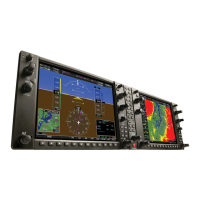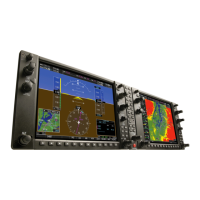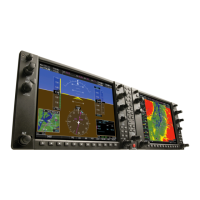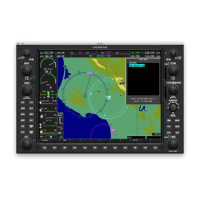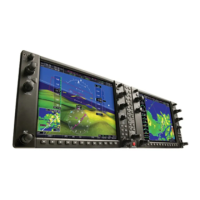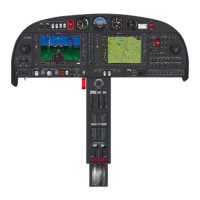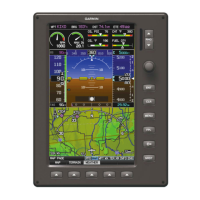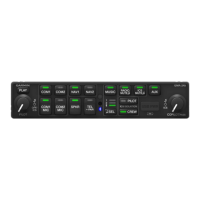Garmin G1000 Pilot’s Guide for the Socata TBM 850/900
190-00709-05 Rev. D696
APPENDIX D
When DOes the cDi scale change?
Once a departure is activated, the G1000 Course Deviation Indicator (CDI) full scale deflection is set to 0.3
nm. The CDI scale changes to 1.0 nm (terminal mode) then ramps up to 2.0 nm (enroute mode) at 30 nm
from the departure airport. When 31 nm from the destination, the CDI scale smoothly transition from 2.0 nm
back to 1.0 nm (terminal mode). At 2.0 nm before the FAF during an active approach, the CDI scale transitions
down further based on the type of approach activated (LNAV, LNAV/VNAV, LP, LPV). When a missed approach
is activated, the CDI is set to 0.3 nm. See the Flight Instruments Section for more details on CDI scaling.
Why DOes the hsi nOt ResPOnD like a vOR When OBs mODe is active?
Unlike a VOR, the CDI scale used on GPS equipment is based on the crosstrack distance to the desired
course, not on the angular relationship to the destination. Therefore, the CDI deflection on the GPS is constant
regardless of the distance to the destination and does not become less sensitive when further away from the
destination.
What is the cORRect misseD aPPROach PROceDURe? hOW is the misseD aPPROach hOlDing POint selecteD?
To comply with TSO specifications, the G1000 does not automatically sequence past the MAP. The first
waypoint in the missed approach procedure becomes the active waypoint when the SUSP Softkey is selected
after crossing the MAP. All published missed approach procedures must be followed, as indicated on the
approach plate.
To execute the missed approach procedure prior to the MAP (not recommended), select the Active Flight Plan
Page and use the ACT LEG Softkey to activate the missed approach portion of the procedure.
aFteR a misseD aPPROach, hOW can the same aPPROach Be Re-selecteD? hOW can a neW aPPROach Be
activateD?
NOTE
: Do not attempt to reactivate the current approach prior to crossing the missed approach point
(MAP). If an attempt to do so is made, an alert message “Are you sure you want to discontinue the current
approach?” appears. The G1000 directs the pilot back to the transition waypoint and does not take into
consideration any missed approach procedures, if the current approach is reactivated.
After flying the missed approach procedure, the pilot may reactivate the same approach for another attempt by
pressing the
PROC
Key. Once the clearance is given for another attempt, activate the approach by highlighting
‘ACTIVATE APPROACH’ using the large
FMS
Knob and pressing the
ENT
Key. The G1000 provides navigation
along the desired course to the waypoint and rejoins the approach in sequence from that point.
To activate a new approach for the same airport, select the new procedure by pressing the
PROC
Key. Choose
‘SELECT APPROACH’, select the desired approach from the list shown, and press the
ENT
Key. Select the
desired transition, then activate the approach using the
ENT
Key.
To activate a new approach to a different airport, press the Direct-to Key and select the desired airport using
the FMS Knobs. Press the ENT Key to accept the selected airport, then follow the steps in the preceding
paragraph to select an approach for the new airport.
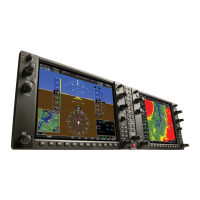
